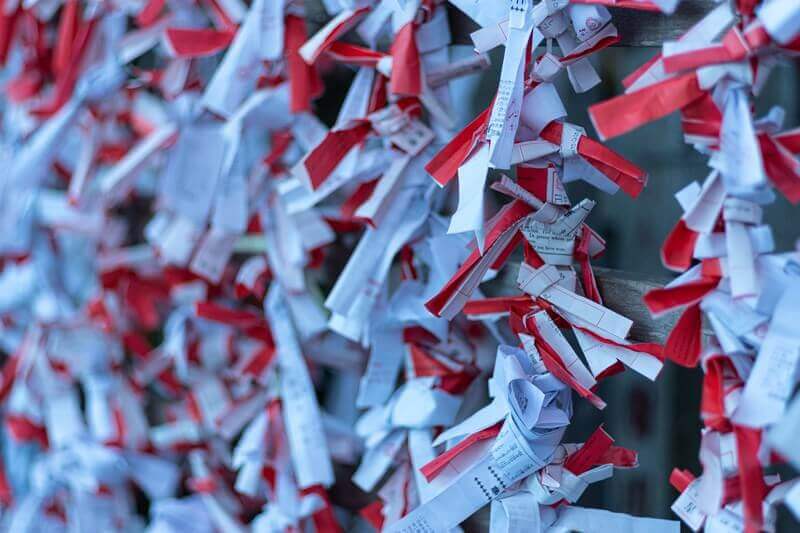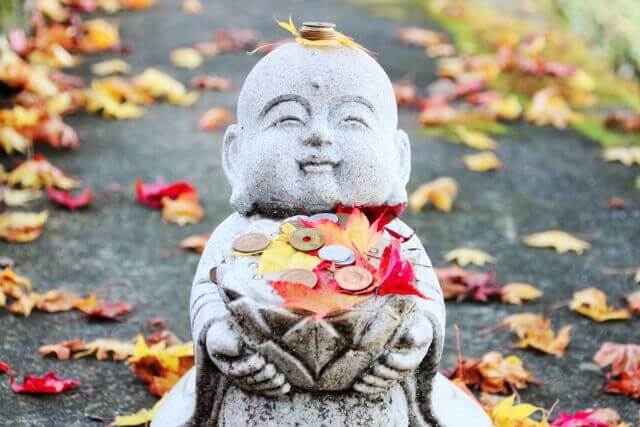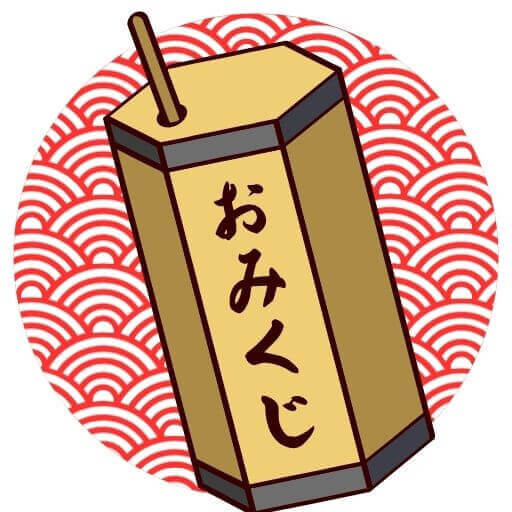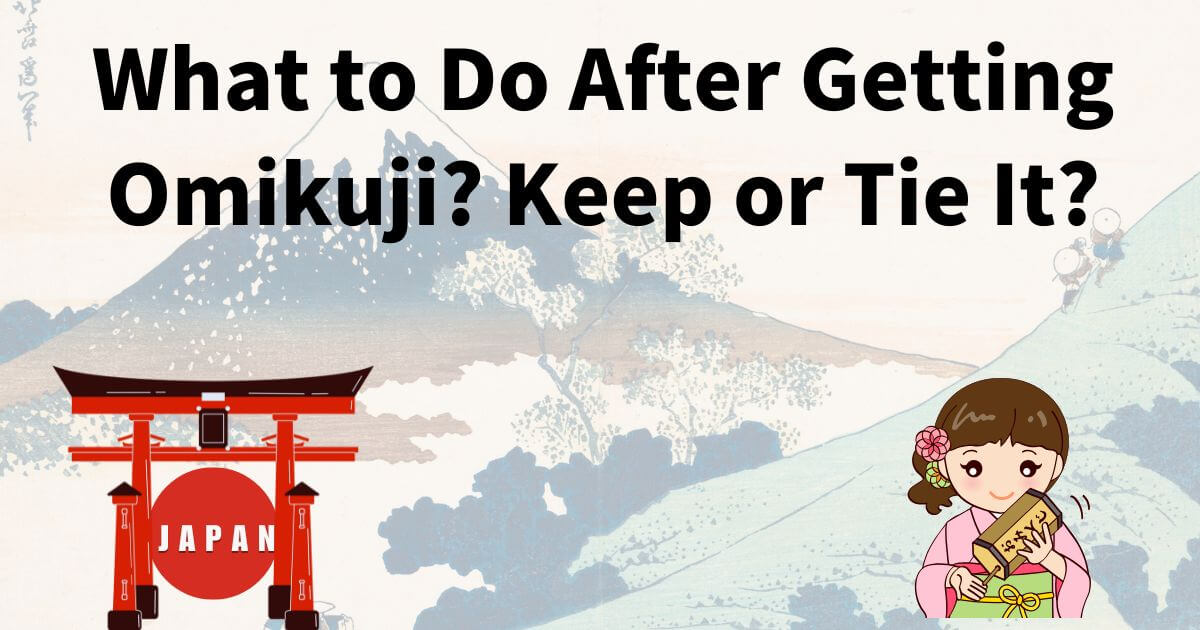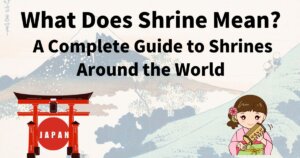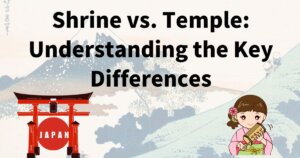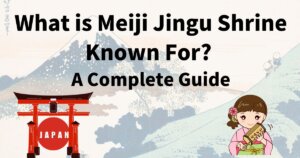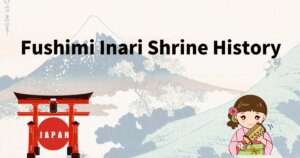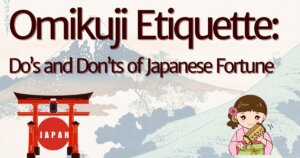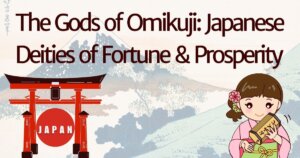What to Do After Drawing Omikuji: Understanding the Next Steps
(おみくじを引いた後の行動:次のステップを理解する)
The Meaning of Omikuji: A Guide to Your Fortune Slip
(おみくじの意味とは?運勢札のガイド) Omikuji (おみくじ) is a traditional Japanese fortune slip that provides guidance on various aspects of life, such as love, health, career, and travel. It is believed to offer wisdom rather than absolute predictions. (おみくじは、恋愛、健康、仕事、旅行などの人生のさまざまな側面について指針を与える日本の伝統的な運勢札です。絶対的な未来予測ではなく、知恵を与えるものと考えられています。)
Reading and Understanding Your Omikuji
(おみくじを読む&解釈する方法) Omikuji consists of different sections:
- Overall Fortune (運勢): Indicates general luck, ranging from Daikichi (great luck) to Kyo (bad luck). (全体運:大吉から凶までの運勢が記載されている)
- Specific Fortune (各項目の運勢): Covers love, business, health, and travel. (各項目の運勢:恋愛、仕事、健康、旅行の運勢)
- A Poem or Proverb (和歌・詩): Offers deeper spiritual insight. (和歌や詩:より深い霊的な意味を示すもの)
- Advice (助言): Provides recommendations for improving one’s life. (助言:人生をより良くするためのアドバイス)
What to Do if You Get a Good Omikuji?
(良いおみくじを引いたらどうする?) If your Omikuji indicates good fortune, it is considered a blessing. Many people choose to:
- Keep it in their wallet, bag, or home shrine for good luck. (財布やバッグ、自宅の神棚に入れて幸運を持ち続ける)
- Reflect on the advice and apply it to daily life. (助言を読み、日常生活に活かす)
- Revisit the shrine to express gratitude if the fortune comes true. (運勢が実現したら、感謝を伝えるために神社を再訪する)
What to Do if You Get a Bad Omikuji?
(悪いおみくじを引いたらどうする?) Receiving bad luck (Kyo) in Omikuji is not a permanent fate but a warning or advice for improvement. Recommended actions include:
- Tying the Omikuji to a designated rack or tree at the shrine. (神社の指定された架け台や木に結ぶことで厄を落とす)
- Viewing it as guidance rather than a fixed destiny. (決められた運命ではなく、助言として受け取る)
- Praying for improvement and taking proactive steps. (運気の向上を願い、積極的な行動を取る)
Cultural and Spiritual Etiquette for Handling Omikuji
(おみくじの扱い方:文化的・精神的なマナー)
Where and How to Tie a Bad Omikuji at a Shrine
(悪いおみくじを神社に結ぶ場所と方法)
- Look for a designated Omikuji tying rack or tree. (神社の指定されたおみくじ結び所を探す)
- Tie the Omikuji with a simple knot, symbolizing the removal of bad luck. (おみくじを簡単な結び目で結び、不運を置いていくことを象徴する)
- Leave it respectfully and do not tear or throw it away carelessly. (敬意を持って結び、破いたり、無造作に捨てたりしない)
Keeping Omikuji: Best Practices for Good Luck
(おみくじを持ち帰る場合の最適な方法)
- Store it in a safe place like a wallet, desk, or home altar. (財布、机、自宅の神棚などの安全な場所に保管する)
- Avoid crumpling or damaging it to maintain its spiritual value. (霊的な価値を保つために、くしゃくしゃにせず丁寧に扱う)
- Use it as a reminder of the guidance provided. (助言を思い出すための指標として活用する)
How Long Should You Keep an Omikuji?
(おみくじはどれくらいの期間持っておくべき?)
- If it brings luck, keep it until the next significant life event. (良い運勢なら、次の大きな出来事まで持ち続ける)
- Some people return it to the shrine at the end of the year. (年末に神社へ返納する人もいる)
- It can also be burned at a shrine for spiritual cleansing. (神社でお焚き上げして浄化することも可能)
What If You Lose Your Omikuji?
(おみくじを失くしたらどうする?)
- Don’t worry—Omikuji is guidance, not a binding fate. (心配する必要はない。おみくじは指針であり、運命を決めるものではない)
- Reflect on the message and continue applying its lessons. (書かれていた助言を思い出し、実生活に活かす)
- You can always draw another Omikuji if you seek further guidance. (再び神社を訪れ、新たなおみくじを引くこともできる)
Modern Variations of Omikuji
(現代のおみくじのバリエーション) Many shrines now offer:
- Digital Omikuji via vending machines or mobile apps. (自動販売機やアプリでデジタルおみくじを提供している神社もある)
- Specialized Omikuji for love, career, and personal growth. (恋愛、仕事、自己成長に特化した特別なおみくじもある)
【Conclusion】Key Takeaways
(この記事でわかる12のこと)
- Omikuji provides spiritual guidance, not absolute fate. (おみくじは運命を決定するものではなく、精神的な指針を提供する)
- Good Omikuji can be kept for luck, while bad ones are tied at shrines. (良いおみくじは持ち帰り、悪いものは神社に結ぶのが一般的)
- The tradition of tying bad Omikuji represents leaving bad luck behind. (悪いおみくじを結ぶことは、不運を置いていく意味を持つ)
- It is common to draw Omikuji at the start of the year or before major life events. (おみくじは新年や人生の重要な節目で引かれることが多い)
- Keeping Omikuji properly preserves its spiritual significance. (おみくじを適切に保管することで、霊的な価値を維持できる)
- Modern Omikuji includes digital and themed versions for specific purposes. (現代ではデジタル版やテーマ別のおみくじも登場している)
